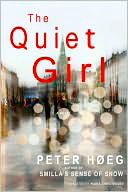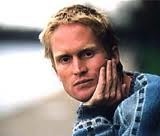“People make noise. Their bodies make noise. But so do their thoughts, their feelings. We all make noise. I hear very well, sort of like an animal, and it’s been that way ever since I was a child. It isn’t always fun; you can’t shut it out…Even death makes noise…You don’t die when you die.”
Peter Hoeg’s first novel in ten years takes the reader on a trip through an almost psychedelic world of circus clowns, children with mystical abilities, powerful nuns, evil financiers, mysterious security agencies, and bizarre foundations. Kaspar Krone, a circus clown, has discovered that “SheAlmighty has tuned each person into a musical key,” and he is able to hear the music that SheAlmighty creates for each person. By tapping into the music of people’s psyches, he can understand their moods and thoughts. Often the music he hears from those around him is that of Bach, the ebb and flow of a person’s inner spirit paralleling the changing moods of Bach masterpieces.
novel in ten years takes the reader on a trip through an almost psychedelic world of circus clowns, children with mystical abilities, powerful nuns, evil financiers, mysterious security agencies, and bizarre foundations. Kaspar Krone, a circus clown, has discovered that “SheAlmighty has tuned each person into a musical key,” and he is able to hear the music that SheAlmighty creates for each person. By tapping into the music of people’s psyches, he can understand their moods and thoughts. Often the music he hears from those around him is that of Bach, the ebb and flow of a person’s inner spirit paralleling the changing moods of Bach masterpieces.
Complex and sometimes mystifying, The Quiet Girl builds its non-linear “story” through impressionistic scenes, presented seemingly at random from the past, present, future, and even the imagination. It is up to the reader to create a narrative from the scenes presented as the characters overlap and as additional information is revealed.

Kaspar is being investigated for tax evasion and is about to be deported from Denmark to Spain. As he deals with a series of governmental officials from Department H and other mysterious departments, people from the circus who may or may not want to help him, and the mysterious Rabia Institute, a convent of Praying Sisters, he, like the reader, tries to make sense of the world around him. Virtually solitary since his abandonment, years ago, by Stina, the love of his life, he is also coping with the imminent death of his estranged father, Maximillian.
When he sees a small girl, KlaraMaria, with her “family,” she claims, virtually telepathically, that she has been kidnapped and wants Kaspar to help her. Eventually, he learns that the nuns from the Rabia Institute have been protecting a group of children, believing that “Some children are born with a gift for coming close to God faster than others.” All these children have been born under a rainbow, all seem connected to the phenomenon of earthquakes, and all are possessed of mystic gifts. A group of evil men, wanting to use these children for their own unstated purposes, have kidnapped six of them from around the world, and one small girl has been found dead, her fingers having been cut off at the second knuckle. The nuns seek Kaspar’s help, offering to pay his debts and help him avoid deportation on tax evasion charges, in exchange.
 As he searches for the missing children and tries to learn what they represent to their enemies, Kaspar encounters mortal dangers. He does not know whom he can trust, and neither does the reader. A large cast of characters, none of whom are fully developed, keep the mystery high but the reader’s ability to identify with Kaspar lower, and when the grand finale finally occurs, and the loose ends get tied up, the reader may feel a sense of letdown by the coincidences, something that the author himself acknowledges when he says, “When the cosmos dishes out artificial coincidences, it’s nice not to have an overdose.”
As he searches for the missing children and tries to learn what they represent to their enemies, Kaspar encounters mortal dangers. He does not know whom he can trust, and neither does the reader. A large cast of characters, none of whom are fully developed, keep the mystery high but the reader’s ability to identify with Kaspar lower, and when the grand finale finally occurs, and the loose ends get tied up, the reader may feel a sense of letdown by the coincidences, something that the author himself acknowledges when he says, “When the cosmos dishes out artificial coincidences, it’s nice not to have an overdose.”
Hoeg’s exploration of the science of sound as the key to understanding man’s connections to the universe shows us a reality that is often violent and discordant. Love is fragile and fraught with peril, and the answers to life’s biggest questions are often tantalizingly out of reach. Still, man must soldier on, trusting that SheAlmighty has a grander plan, a greater symphony underlying our individual fates. As Kaspar himself observes, “In order to live in this world, we need to keep an orchestra playing.”
ALSO by Peter Hoeg: THE ELEPHANT KEEPER’S CHILDREN, THE WOMAN AND THE APE (on Amazon)
Notes: The author’s photo appears on his website: http://peterhoeg.com
The circus tent is from http://www.tallaght-arts.ie
